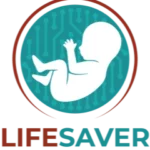JPIAMR transnational co-funded call on antimicrobial resistance
One Health intervention to prevent or reduce the development and transmission of antimicrobial resistance (AMR)
Why you should use microfluidics for the JPIAMR-ACTION
- Organ-on-chip for analysis of antimicrobial resistance
- Lab-on-chip for production and testing of antimicrobial agents
- Microfluidics and artificial intelligence

What microfluidics can do for the JPIAMR-ACTION
The JPIAMR call advocates for a One Health approach. Proposals should focus on at least two One Health settings (human, animal, environment) and should aim to either:
1. Understand the impact of interventions on the development and transmission of antibiotic resistance in, and/or between, at least two One Health settings.
OR
2. Design, implement, evaluate, and/or compare innovative interventions to control the development and transmission of antibiotic resistance in, and/or between, at least two One Health settings.
With microfluidics it is possible to perform sample analysis in a fast and accurate way. Transmission of antimicrobial resistance can be analysed fast and on-site in different settings. The advantages of microfluidics are:
- The very precise control of the cell microenvironment during microfluidic cell culture
- A very precise dosage of pharmaceutically active compounds
- The possibility to parallelize and automate the experiments
The main applications of microfluidics in medicine are drug screening, biomaterial testing (as developed in our project PANBioRA), and reproducing a specific pathology on a chip in a personalized manner.
Microfluidic lab-on-chip devices are also very interesting, for example, in sample analysis (blood, urine, saliva…, etc.) and the detection and synthesis of antimicrobial compounds. They allow the automated and short-time parallelized analysis of various samples with very low volumes. The same technology can be used for the personalized synthesis of specific compounds, as in the project ElectroMed.
What can the MIC do for your JPIAMR project?
The MIC can bring its expertise in microfluidic instrumentation and flow control to help you develop your research project’s microfluidic innovation! We have already participated in more than 30 European projects to help our partners develop systems suited to their projects.
More specifically, we can:
- Develop user-friendly platforms for the perfusion of your tissue model
- Build innovative instruments for sample injection
- Design the flow control solution suited for your project
- Automate your system to allow high-throughput experiments and good reproducibility
The MIC already brought its microfluidics expertise into many research projects:
H2020-NMBP-TR-IND-2020

Microfluidic platform to study the interaction of cancer cells with lymphatic tissue
H2020-LC-GD-2020-3

Toxicology assessment of pharmaceutical products on a placenta-on-chip model
